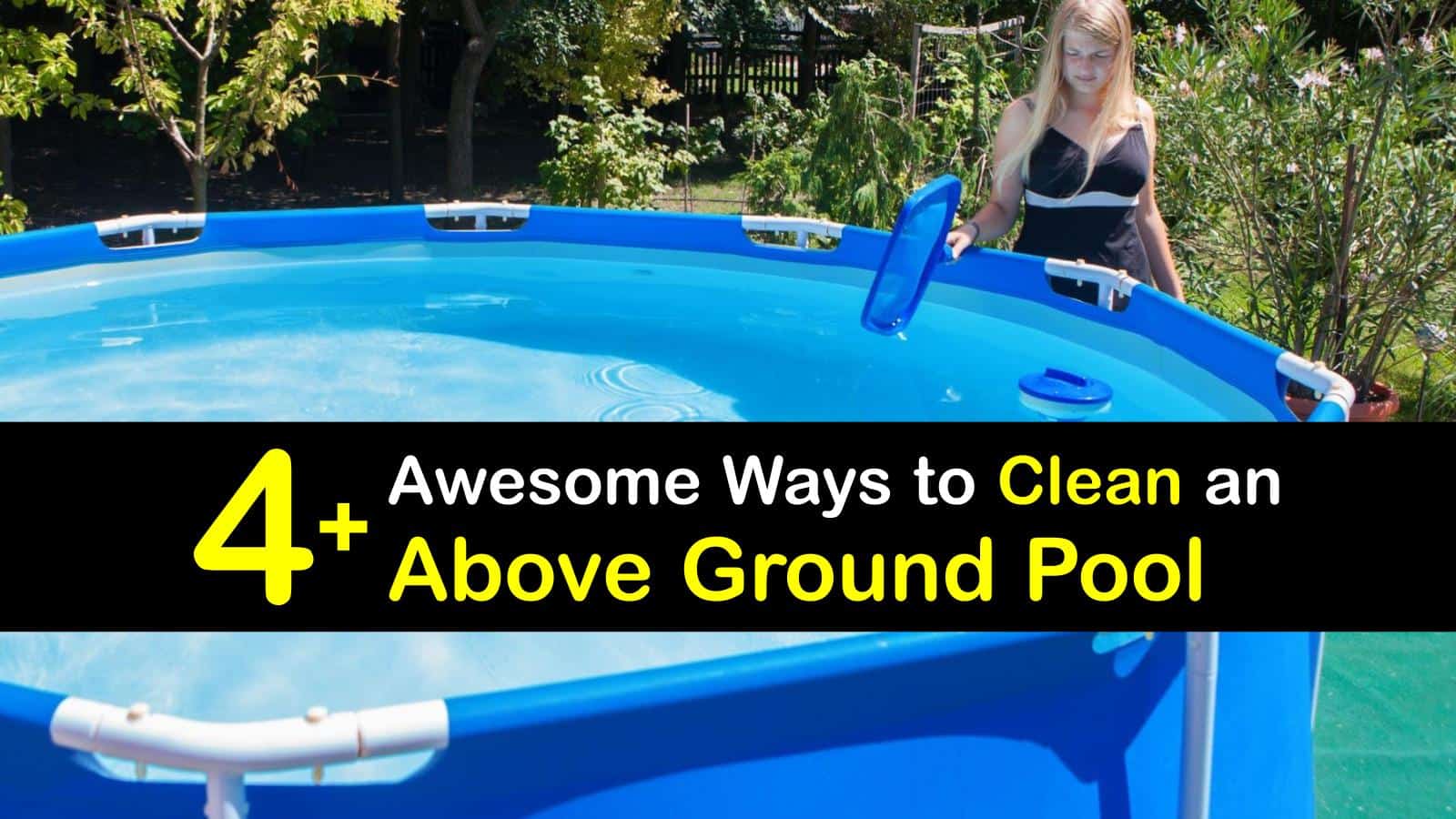Every above-ground pool owner experiences the inevitable task of draining and cleaning their cherished swimming sanctuary. Draining the pool is typically required for maintenance, repairs, or the dreaded winterizing process. After removing the water, the next crucial step is meticulously cleaning the pool’s surfaces to ensure a sparkling and hygienic environment for future swimming adventures. Here’s a comprehensive guide to help you tackle this essential task:

Image: www.tipsbulletin.com
Understanding the Importance of Proper Cleaning
Cleaning an above-ground pool after draining is not just an aesthetic endeavor; it’s essential for maintaining pool hygiene and longevity. Draining the water exposes the pool’s surfaces to air, creating a perfect environment for bacteria, algae, and dirt to accumulate. This can lead to unsightly stains, unpleasant odors, and even health hazards if left unchecked. Regular and thorough cleaning will not only restore your pool’s pristine appearance but also protect it from deterioration and ensure a safe and healthy swimming experience.
Essential Tools and Materials
Before embarking on your cleaning mission, gather the necessary tools and materials to make the process efficient and effective:
- Soft-bristled brush (pool brush or soft scrub brush)
- Pool cleaner (commercial or DIY solution)
- Chlorine tablets or granules
- Baking soda
- Garden hose with adjustable nozzle
- Sponge or microfiber cloths
- Bucket
- Gloves
- Safety goggles (optional)
Step-by-Step Cleaning Guide
With the right tools at hand, follow these step-by-step instructions to give your above-ground pool a thorough cleaning:

Image: derivbinary.com
1. Scrub the Walls and Floor
Start by scrubbing the pool’s walls and floor using the soft-bristled brush and pool cleaner solution. Apply the cleaner according to the manufacturer’s instructions, ensuring an even distribution over all surfaces. Use circular motions to loosen and remove dirt, algae, and any other debris. For stubborn stains or grime, you can use a stronger cleaning solution or baking soda paste.
2. Disinfection and Sanitization
Once the surfaces are scrubbed clean, it’s time to disinfect and sanitize the pool. Add chlorine tablets or granules to the pool according to the specified dosage for your pool’s size. Chlorine acts as a powerful disinfectant, killing bacteria and preventing the formation of algae. Allow the chlorine to circulate throughout the pool for at least 24 hours before swimming.
3. Rinse and Remove Debris
After disinfection, thoroughly rinse the pool with clean water from the garden hose. Use the adjustable nozzle to spray water directly at the walls and floor, removing any residual cleaner or debris. This step helps prevent staining or discoloration from lingering cleaning agents.
4. Clean the Pool Ladder, Coping, and Decking
Don’t forget about the pool ladder, coping, and surrounding deck area. Use the sponge or microfiber cloths with pool cleaner solution to wipe down these surfaces, removing any dirt or footprints. Rinse thoroughly with water, and allow them to dry completely.
5. Refill and Enjoy
Once all surfaces are clean and disinfected, you can refill the pool with fresh water. Start by filling the pool a few inches at a time, allowing the walls to expand gradually and evenly. Continue filling until the pool reaches its optimal water level. Before diving in, ensure the chlorine levels are within the safe swimming range by testing the water with a pool test kit.
How To Clean Above Ground Pool After Draining
Additional Tips for a Pristine Pool
- Clean your pool regularly, at least once a month during the swimming season, to prevent dirt and debris accumulation.
- After heavy rain or storms, check the pool for debris and clean it if necessary.
- Use a pool cover when not in use to keep dirt and leaves out of the water.
- Vacuum the pool regularly to remove any settled debris that might not be visible on the surface.
- Test the pH balance of your pool water regularly and adjust it as needed using pH increasers or decreasers.
- Maintain proper chlorine levels to keep the water sanitized and free from bacteria.
- Shock the pool occasionally with a chlorine shock treatment to eliminate contaminants that may not be killed by regular chlorination.
By following these steps and implementing these additional tips, you can ensure your above-ground pool remains sparkling clean, hygienic, and ready for countless refreshing dips throughout the season. Remember, a well-maintained pool is not only an inviting place to cool off but also a valuable asset for your home and family.